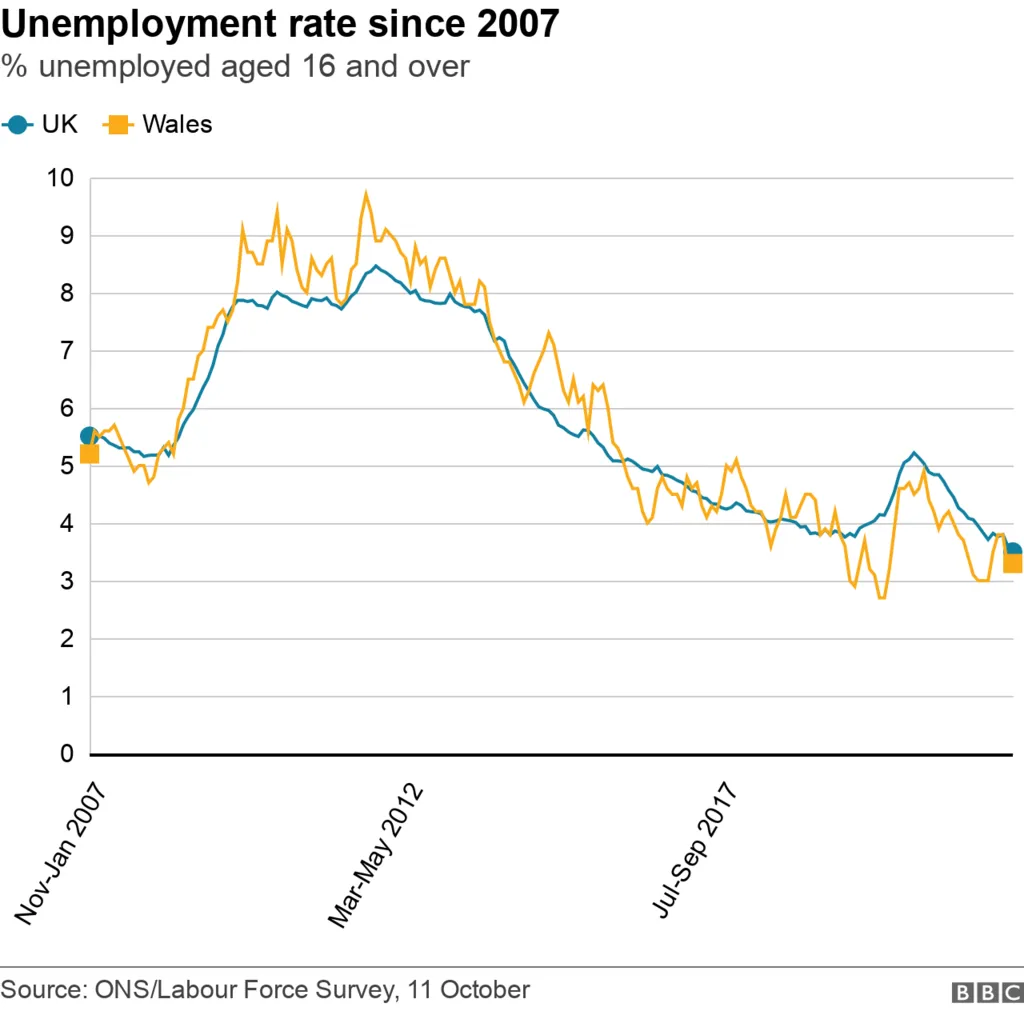
By The Nexus Gazette.
13th August, 2024.
Wales has recently undergone a significant shift in its labor market, marked by both a decrease in unemployment and a decline in the number of people employed. The latest figures from the Office for National Statistics (ONS) reveal a complex picture, with notable improvements in some areas but concerning trends in others.
In a positive development, Wales recorded one of the most substantial drops in unemployment rates across the United Kingdom. Between April and June 2024, the unemployment rate fell from 5% to 3.8%. This represents a significant improvement compared to the same period in the previous year. The decline positions Wales as one of the leading regions in reducing unemployment, a trend that reflects the broader economic recovery efforts in the post-pandemic era.
However, the good news on unemployment is tempered by a worrying decline in the overall employment rate. The number of people in work has decreased to 68.9%, the lowest among all UK nations and regions. This marks a 2.8 percentage point drop from the previous year, leaving just over 1.4 million people employed in Wales.

The fall in employment raises concerns about the underlying health of the Welsh economy. While fewer people are unemployed, the shrinking employment base suggests that more individuals may be leaving the workforce entirely, rather than transitioning into new jobs.
One of the most pressing challenges facing Wales is its high rate of economic inactivity. This measure includes people who are neither working nor actively seeking work, often due to long-term sickness, caring responsibilities, or early retirement. The economic inactivity rate in Wales now stands at 28.3%, the highest in the UK. This figure has increased by 3.7 percentage points over the past year.
A significant portion of the economically inactive population—about one-third—are long-term sick. This segment of the population has remained relatively stable, indicating ongoing challenges in public health and social care that need to be addressed.

The broader UK context shows a slowing of wage growth, which increased at an annual rate of 5.4%. This is the weakest growth rate in about two years, a decline attributed by the ONS to comparisons with the previous year when NHS bonuses were paid out in June 2023. Moreover, job vacancies continue to decline, although they remain above pre-COVID levels. This trend suggests that while the job market is cooling, it has not yet returned to pre-pandemic conditions.
The labor market in Wales presents a mixed picture. The sharp decline in unemployment is a positive sign, but the simultaneous drop in employment and rising economic inactivity rates highlight significant ongoing challenges. Addressing these issues will be crucial for ensuring a robust and inclusive economic recovery in Wales.
Resources:
1.https://www.bbc.co.uk/news/articles/c14zn5dg07go
2.https://www.msn.com/en-xl/news/other/unemployment-and-numbers-in-work-both-fall-in-wales/ar-AA1oHK1X
3.https://www.bbc.com/news/articles/c14zn5dg07go